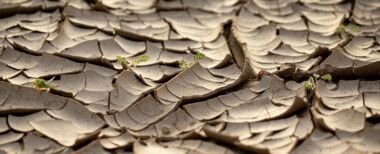
Washington - (Saba):
As climate change intensifies, South Africa is not only becoming hotter and drier; it is also warming by up to 2 millimeters per year, according to a new study.
Scientists knew this rise was occurring, but the prevailing explanation was that it was caused by mantle flow within the Earth's crust.
The new study, published in the Journal of Geophysical Research, suggests that this rise is due to the recent drought and the resulting water loss, a trend linked to global climate change.
This discovery was made possible thanks to a network of Global Navigation Satellite System (GNSS) stations in South Africa. This network is used primarily for atmospheric research and provides accurate elevation data for various locations across the country.
"These data showed an average rise of 6 millimeters between 2012 and 2020," says geodesist McCann Carrigar of the University of Bonn.
Experts have attributed this phenomenon to the Kwathlamba hotspot. A localized bulge in the Earth's crust likely resulted from the upwelling of material from a mantle plume suspected of lying beneath the region, which triggered the recent uplift.
However, we have now tested another hypothesis, says Karigar. "We believe that the loss of groundwater and surface water is also likely responsible for the land-level rise."
To explore this possibility, Karigar and his colleagues analyzed Global Positioning System (GNSS) elevation data along with rainfall patterns and other hydrological variables across southern Africa.
A strong correlation emerged. Areas that had experienced severe drought in recent years experienced significant land-level rise.
The rise was most pronounced during the drought that lasted from 2015 to 2019, a period when Cape Town faced the imminent threat of "Day Zero"—a day without water.
The study also examined data from the GRACE satellite mission, a joint effort between NASA and the German Aerospace Center to measure Earth's gravity field and changes in water distribution.
“These results can be used to calculate, among other things, the change in the total mass of the water reserve, including the sum of surface water, soil moisture, and groundwater,” says Christian Mielke, a geodesist at the University of Bonn. “However, the spatial resolution of these measurements is very low, only a few hundred kilometers.”
Despite this low resolution, the GRACE satellite data supported the hypothesis: places with less water mass had higher elevations at nearby GNSS stations.
The team used hydrological models to gain a more accurate view of how drought affects the water cycle.
“These data also showed that the uplift of the land can be primarily explained by drought and the associated loss of water mass,” says Mielke.
The researchers suggest that, in addition to upward pressure from the mantle plume, the loss of moisture in the Earth’s crust may also be causing it to bulge.
Given the serious threat posed by droughts in South Africa, as well as many other parts of the world, this discovery may provide a valuable insight into water availability.